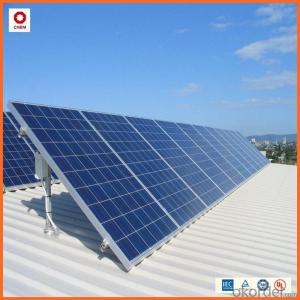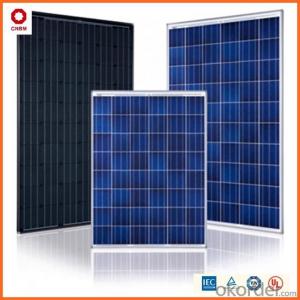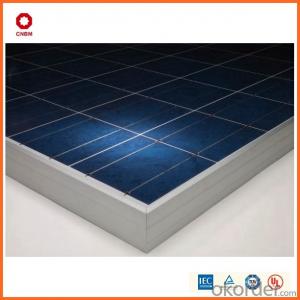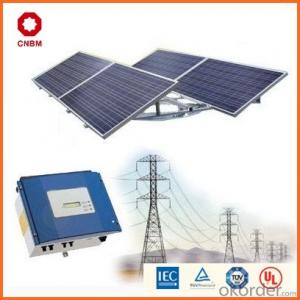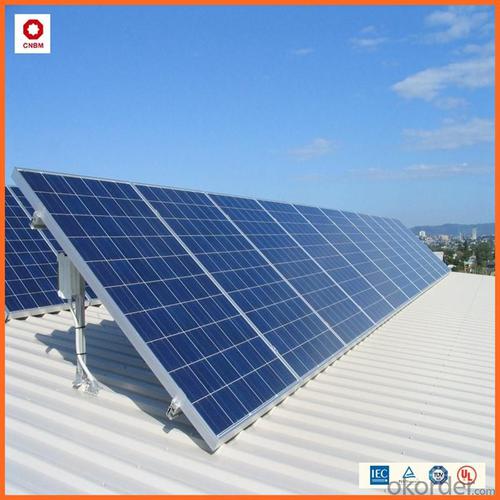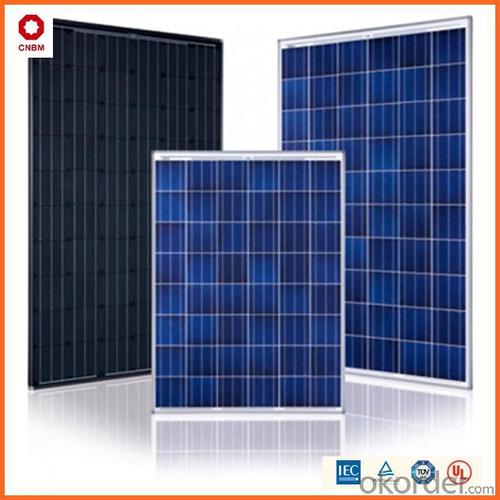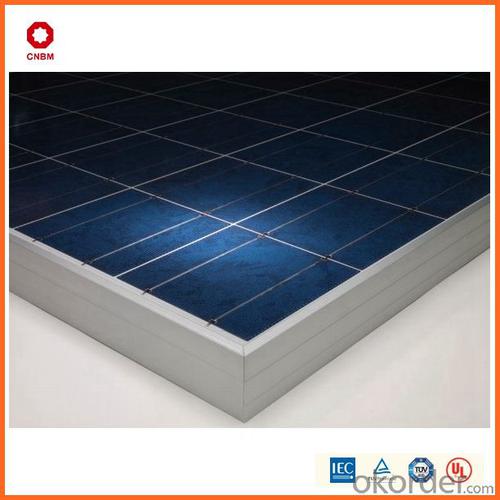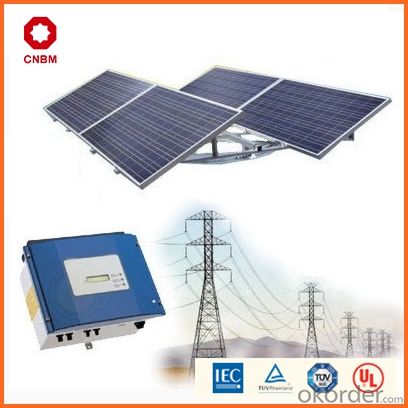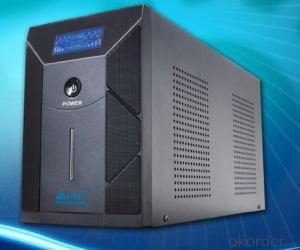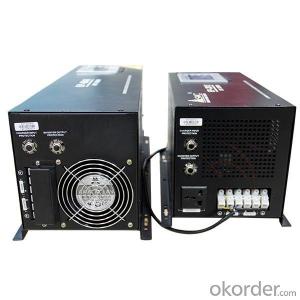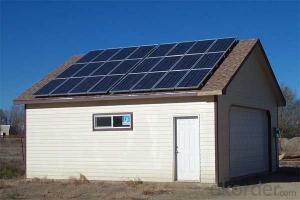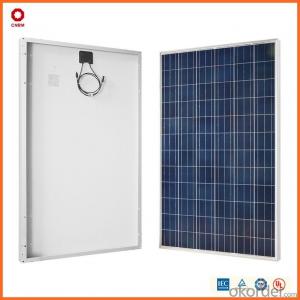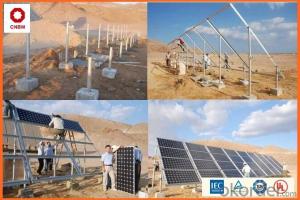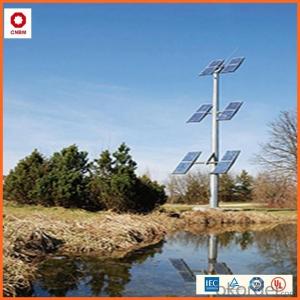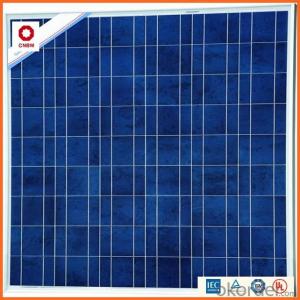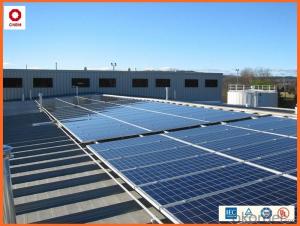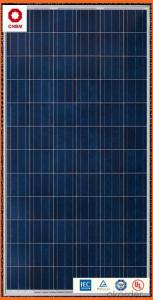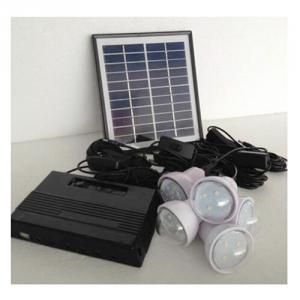15w Small Solar Panels in Stock China Manufacturer
- Loading Port:
- China main port
- Payment Terms:
- TT OR LC
- Min Order Qty:
- 10 watt
- Supply Capability:
- 10000000 watt/month
OKorder Service Pledge
OKorder Financial Service
You Might Also Like
Specification
Product Description:
Hot Sale !!! Quality and Safety of Small Poly Solar Panel 5w~150w
1. Rigorous quality control meets the highest international standards.
2. High-transmissivity low-iron tempered glass, strong aluminium frame.
3. Using UV-resistant silicon.
4. IS09001/14001/CE/TUV/UL
Warranties of Small Poly Solar Panel 35~85w
1. 10 years limited product warranty
2. 15 years at 90% of the minimal rated power output
3. 25 years at 80% of the minimal rated power output
Specification
Characteristics of Poly solar panels CNBM (245-320W) | |||||
Max Power Voltage Vmp(V) | 30.3 | 30.8 | 31.1 | 31.4 | 31.85 |
Max Power Current Imp(A) | 7.60 | 7.64 | 7.73 | 7.81 | 7.85 |
Open Circuit Voltage Voc(V) | 36.1 | 36.6 | 37 | 37.3 | 37.68 |
Short Circuit Current Isc(A) | 8.50 | 8.55 | 8.65 | 8.75 | 8.85 |
Max Power Pm(W) | 230W | 235W | 240W | 245W | 250W |
Temperature Coefficient of Cells Poly solar panels CNBM (245-320W) | |
NOCT | 45± 2 |
Temperature Coeffucients of Isc | 0.0492 |
Temperature Coeffucients of Voc | -0.3374 |
Temperature Coeffucients of Voc | -0.4677 |
Mechanical Data of Poly solar panels CNBM (245-320W) | |
Dimension | 1638 × 982 × 40 mm |
Weight | 19.5 kg |
No. of Cells and Connections | 60 (6 ×10) |
Tolerance | 0 ~ + 5 W |
Cell | Monocrystalline Cell 156 × 156 mm |
Packing | 624 Pcs/40ft(H) Container |
Limits of Poly solar panels CNBM (245-320W) | |
Operating Temperature | -40 to +85 |
Storage Temperature | -40 to +85 |
Max System Voltage | 1000VDC(IEC) / 600VDC(UL) |
Features of our products:
• High conversion efficiency mono/poly-crystalline amorphous silicon solar cells
• Modules incorporate high performance bypass diodes to minimize the power drop caused by shading
• High transmittance, low-iron tempered glass
• High performance EVA encapsulant to prevent destroying and water.
• AI frame: without screw, corner connection. 8 holes on the frame can be installed easily
• Good performance of preventing from atrocious weather such as wind and hails
• Certifications: CE IEC TUV VDE UL, Class I
• 10 years 90% power output warranty
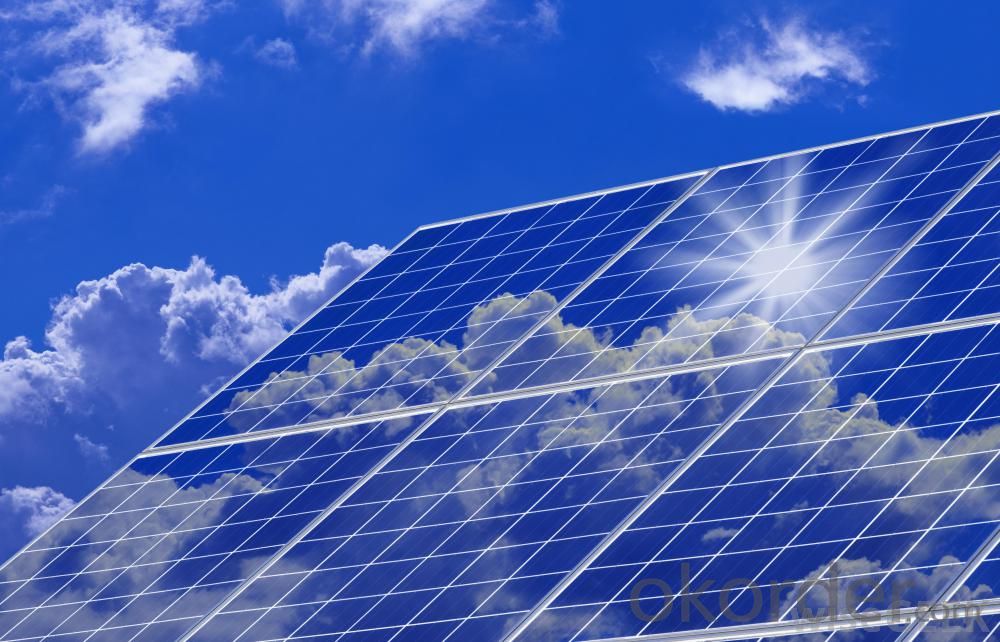
Shipping of Small Poly Solar Panel 35~85w
By Sea | Delivery from Shanghai or Ningbo seaport |
By Air | Departure from Shanghai Pudong Airport |
By Express | Post by DHL, EMS, UPS, TNT. |
Features of our products:
• High conversion efficiency mono/poly-crystalline amorphous silicon solar cells
• Modules incorporate high performance bypass diodes to minimize the power drop caused by shading
• High transmittance, low-iron tempered glass
• High performance EVA encapsulant to prevent destroying and water.
• AI frame: without screw, corner connection. 8 holes on the frame can be installed easily
• Good performance of preventing from atrocious weather such as wind and hails
• Certifications: CE IEC TUV VDE UL, Class I
• 10 years 90% power output warranty
As a professional Solar Panel manufacturer and Supplier in China, we have our customers come around the whole world and our specialization has got a worldwide recognition. Meanwhile, with our superior quality, competitive price, prompt and excellent service, As main role in trade section of CNBM Group, CNBM International Corporation supplies products including Monocrystalline Solar Panel, Polycrystalline Solar Panel ( multicrystalline silicon Solar Panel) have received and enjoyed famous reputation in many countries and regions in the world.
- Q: Can solar energy systems be used in areas with limited construction materials?
- Yes, solar energy systems can be used in areas with limited construction materials. Solar energy systems can be designed to be simple and require minimal construction materials. For example, small-scale solar systems like solar panels or solar lanterns can be easily installed and used in remote areas with limited resources. Additionally, innovative solutions like solar cookers or solar water heaters can also be implemented in areas with limited construction materials, providing clean and sustainable energy alternatives.
- Q: Can solar energy systems be used during a power outage?
- Yes, solar energy systems can be used during a power outage as long as they are equipped with battery storage. This allows the stored solar energy to be used as a backup power source when the grid is down.
- Q: Can solar energy systems be used for powering electric vehicles?
- Yes, solar energy systems can be used to power electric vehicles. Solar panels can be installed on the roof or other suitable areas of the vehicle to generate electricity from sunlight. This electricity can then be used to charge the vehicle's battery, reducing the need to rely solely on electric grid power. While the amount of energy generated may vary depending on factors such as panel efficiency and sunlight availability, solar power can significantly contribute to the overall charging of electric vehicles.
- Q: Are there any fire safety concerns associated with solar energy systems?
- Yes, there are fire safety concerns associated with solar energy systems. While solar energy systems are generally considered safe and reliable, there have been instances where these systems have caused fires. One potential fire safety concern is related to faulty installation or maintenance of the solar panels. If the panels are not properly installed, there is a risk of electrical faults or short circuits, which can lead to overheating and potentially cause a fire. Similarly, if the system is not regularly inspected and maintained, it can increase the risk of electrical failures and subsequent fires. Another concern is related to the electrical wiring and connections of the solar energy system. Faulty wiring or loose connections can generate heat and may result in electrical fires. This is particularly relevant in older systems where wiring may have deteriorated over time. Moreover, during a fire incident, firefighters may face additional challenges when dealing with buildings equipped with solar energy systems. The presence of live electricity generated by the panels can pose a risk to firefighters, making it more difficult to safely extinguish the fire. To mitigate these fire safety concerns, it is crucial to ensure that solar energy systems are installed by qualified professionals following the necessary codes and regulations. Regular inspections and maintenance should also be conducted to identify and address any potential issues promptly. Additionally, it is important for firefighters to receive proper training on how to handle fires involving solar energy systems to minimize risks.
- Q: How does the presence of nearby power lines affect the performance of solar panels?
- Solar panels can be affected in both positive and negative ways by the presence of nearby power lines. On the positive side, power lines can serve as a reliable backup source of electricity when solar panels are unable to generate sufficient power due to cloudy or low-light conditions. This is particularly advantageous for properties that heavily rely on solar energy and cannot tolerate any interruptions in their power supply. Conversely, the close proximity of power lines can also have detrimental effects on solar panel performance. Shading is a major concern in this case, as power lines often cast shadows on the panels, resulting in reduced overall output. Even a slight amount of shading can significantly impair the efficiency of a solar panel, disrupting the flow of photons and diminishing the amount of sunlight that can be converted into usable electricity. Moreover, placing solar panels near power lines can lead to electromagnetic interference (EMI), which can disrupt their normal functioning and impede their ability to convert sunlight into electricity. This interference can cause a decline in energy production and efficiency. It is important to acknowledge that the specific impact of nearby power lines on solar panel performance can vary depending on several factors, including the distance between the power lines and the panels, the panels' angle and orientation, and the design and quality of the panels themselves. To address these potential issues, it is advisable to carefully plan and design the installation of solar panels, taking into account the proximity of power lines. This may involve adjusting the angle and orientation of the panels to minimize shading and situating them in areas with minimal electromagnetic interference. Additionally, regular maintenance and cleaning of the solar panels can help optimize their performance, irrespective of the presence of nearby power lines.
- Q: What are the different incentives available for installing solar energy systems?
- There are several incentives available for installing solar energy systems, which can make this renewable energy source more financially feasible for homeowners and businesses. One of the most common incentives is the federal investment tax credit (ITC). The ITC allows individuals or businesses to deduct a percentage of the cost of installing a solar system from their federal taxes. Currently, the ITC offers a 26% tax credit for residential systems and commercial systems installed before the end of 2022. Another incentive is net metering, which allows solar system owners to receive credit for the excess electricity their system generates and feeds back into the grid. With net metering, homeowners can offset their electricity bills by using these credits during times when their solar panels do not produce enough energy, such as at night or during cloudy days. Many states also offer additional incentives, such as grants, rebates, or performance-based incentives, to further encourage the adoption of solar energy systems. These incentives vary by state but can significantly reduce the upfront costs of installing solar panels. Some utility companies also provide incentives through solar renewable energy certificates (SRECs). SRECs are tradable credits that represent the environmental attributes of a certain amount of electricity generated from solar energy. By generating solar electricity, homeowners or businesses can earn these SRECs and sell them to utilities, providing an additional source of income. Lastly, some local governments offer property tax exemptions or deductions for installing solar energy systems. This means that the added value of the solar system to a property is not subject to increased property taxes, making solar installations financially more attractive. All of these incentives help offset the initial investment and ongoing costs of solar energy systems, making them a more viable and affordable option for those interested in adopting renewable energy and reducing their carbon footprint.
- Q: Can solar energy systems be used in disaster-prone areas?
- Yes, solar energy systems can be used in disaster-prone areas. In fact, they can prove to be extremely beneficial in these areas. Solar energy systems are resilient and can continue to function even during power outages caused by natural disasters. They provide a reliable and sustainable source of electricity, which can be crucial for emergency response efforts, powering communication systems, medical equipment, and providing lighting and heating. Additionally, solar energy systems can help reduce dependence on fossil fuels, contributing to a more sustainable and environmentally-friendly recovery and rebuilding process.
- Q: Are there any risks of electrical malfunction or failure with solar energy systems?
- Yes, there are some risks of electrical malfunction or failure with solar energy systems. These can include issues such as faulty wiring, damage to solar panels, or inverter failures. Additionally, extreme weather conditions like lightning strikes or power surges can also pose a risk. However, proper maintenance, regular inspections, and adherence to safety guidelines can help mitigate these risks and ensure the safe and efficient functioning of solar energy systems.
- Q: Are there any ongoing monitoring requirements for solar energy systems?
- Yes, there are ongoing monitoring requirements for solar energy systems. Monitoring is essential to ensure that the solar energy system is operating efficiently and effectively. It helps in identifying any potential issues or malfunctions, allowing for timely repairs or maintenance. Ongoing monitoring typically involves tracking the system's performance, including energy production, system uptime, and any deviations from expected outputs. This can be done through various monitoring tools and technologies, such as real-time monitoring software, data loggers, or remote monitoring systems. Additionally, some jurisdictions or incentive programs may have specific monitoring requirements to ensure compliance with regulations or eligibility criteria. Regular monitoring helps maximize the benefits of solar energy systems and ensures their long-term performance and durability.
- Q: Can solar energy systems be used for powering electric gates or fences?
- Yes, solar energy systems can certainly be used to power electric gates or fences. Solar panels can be installed to harness sunlight and convert it into electricity, which can then be used to operate the gates or fences. This renewable energy source offers a sustainable and cost-effective solution for powering such systems, reducing reliance on traditional grid electricity and contributing to environmental conservation.
Send your message to us
15w Small Solar Panels in Stock China Manufacturer
- Loading Port:
- China main port
- Payment Terms:
- TT OR LC
- Min Order Qty:
- 10 watt
- Supply Capability:
- 10000000 watt/month
OKorder Service Pledge
OKorder Financial Service
Similar products
Hot products
Hot Searches
Related keywords
